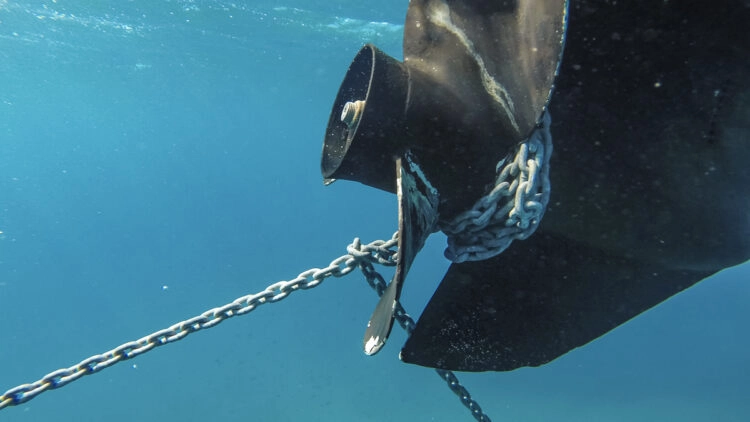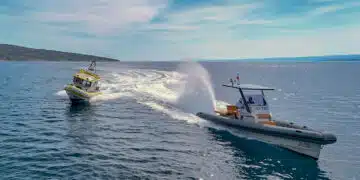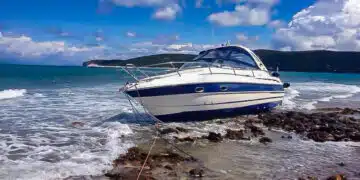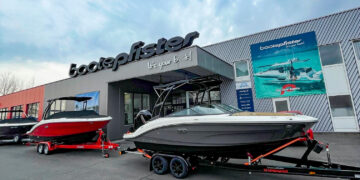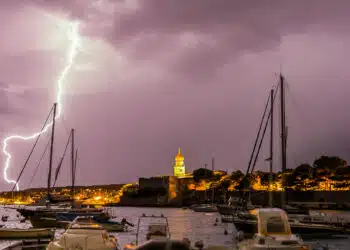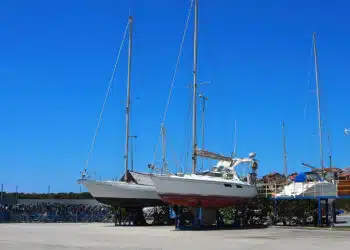A SeaHelp membership offers comprehensive all-round protection for almost any problem that can befall a skipper and his crew. Even freeing lines in the propeller is part of it. But if there is a loud grinding noise or even a bang from the propeller, and the machine stops abruptly, a chain may have wound up there.
SeaHelp members enjoy the many benefits of the large SeaHelp membership community and the free services when things go wrong on board. A SeaHelp response boat is always just two clicks away on your cell phone, providing quick and reliable help with the small and large mishaps on board. This ultimately saves money and nerves as well as wasted vacation time.
The free services provided by the “yellow angels” on the water also include clearing lines in the propeller (article from August 2020). From time to time, however, it happens that not a line but a metal chain gets caught in the propeller. If the crew cannot detach the chain from the propeller themselves, as with a sterndrive or an outboard, good advice is usually expensive. But not with SeaHelp: for members, freeing the screw from a chain is also free of charge.
Chain in the propeller – the consequences are usually dramatic
“Chains usually don’t get caught in the propeller very often, but when it does happen, the consequences are usually dramatic,” says SeaHelp operations manager Marko Orlic from SeaHelp headquarters in Punat. Mostly it happens when the yacht is in drive, and compared to the entanglement of a line in the propeller, there is usually a loud noise when a chain is involved. Everything happens in seconds, he said.
“Attention, if there is about a loud noise when the chain is released, that may indicate a breakage of a propeller blade or other parts, if the chain is tightly wrapped around the propeller”, says Marko Orlic. In addition to the propellers, the drive or the entire shaft assembly can then quickly be permanently damaged, not to mention possible damage to the windlass, the anchor guide, the bow (bow anchor), as well as the gelcoat and the antifouling coating.
In most cases, the anchor was not properly secured
It is often the skipper’s own fault when a chain gets caught in the propeller, says Marko Orlic, because in most cases the anchor was not properly secured. Normally, the anchor and chain move down toward the bottom when the anchor breaks loose. However, if the yacht is in fast forward motion, the anchor does not reach the bottom in the worst case, but starts to move to the surface in the direction of the ship’s stern, i.e. where the propeller is also located.
After the “bang”, there is often a “ghostly silence” on board, because the electronics switch off the engine, and as a result the ship stops abruptly, says Marko Orlic. In this situation, the crew is often unsettled and anxious – although it is precisely now that quick, courageous action is called for, because: if the yacht only has one – shaft-driven – engine, the ship is now mostly unable to maneuver, and an emergency anchor is then also no longer possible, at least if there is only one (larger) anchor on board.
If unable to maneuver: immediately make an emergency call via the SeaHelp app
Operations Manager Orlic recommends: “In such a case, the crew should immediately make a distress call to SeaHelp headquarters.” This is best done with the help of the red distress call button (SOS) of the SeaHelp app. Additionally, the emergency call should be supplemented by sending an emergency text message. Through these messages, the SeaHelp dispatch center would receive both the cell phone number and the yacht’s current position data in real time. A SeaHelp employee from the operations center would then call back immediately, and a rescue boat would set off immediately if necessary, Marko Orlic explained.
“Once we reach the yacht, experience shows that the first thing we recover is the anchor and the chain,” says Operations Manager Orlic, which can sometimes “hang more than 20 meters under the propeller”. Depending on the situation (weather, sea state, etc.), the chain is then removed and the yacht towed; this is “free of charge for SeaHelp members, of course”.
Double keeps better: better look twice if the anchor is secured
To avoid entanglement of the chain on the trip, Orlic recommends “better to check twice whether the anchor is well fastened”and secured against accidental rushing out, especially applies when a passage in rough seas and expected high waves is imminent. Caution: “even in calm seas, one’s yacht may encounter larger waves from another vessel that could dislodge the anchor”.
“Who wants to go completely safe, should also take the current / voltage from the windlass”, says the experienced SeaHelp operations manager Marko Orlic, because otherwise it can happen “that the relay, which controls the windlass, by electromagnetic fields or by fault current independently starts the winch”. In most cases, he said, the clutch is not tight, or the relay switches by itself.
After the repair: check the fuse pin on the propeller
By the way: If you were able to free the propeller from the chain yourself, you should definitely take the time afterwards to check the correct fit of the safety split pin on the propeller. If this has been damaged, the propeller could otherwise quickly “make itself independent” and you will find it, if at all, on the seabed.


